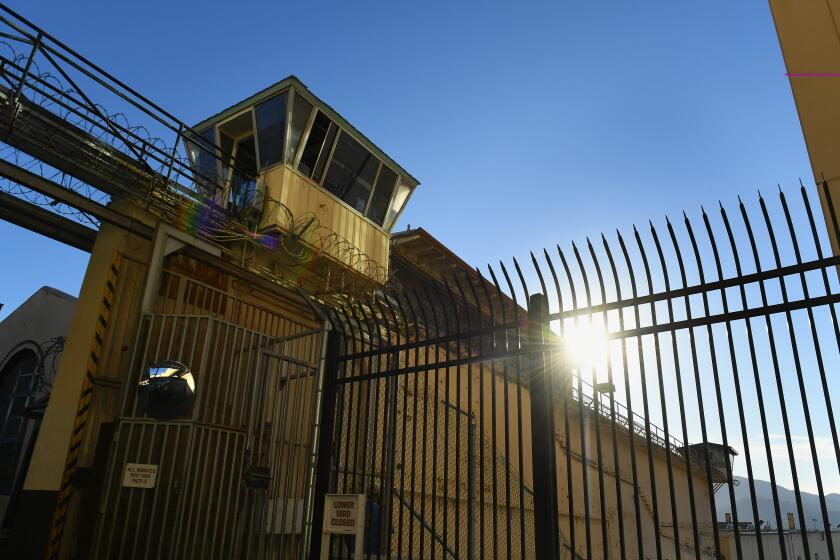Op-Ed: Why has there been an exodus of black residents from West Coast liberal hubs?

Urban farmer Richard Dickinson sells vegetables at the Lentâs International Farmers Market in East Portland, Ore. on July 12, 2015.
The Black Lives Matter movement has brought the challenges facing black America to the fore, and introduced racially conscious quality-of-life questions into the national debate. How are black residents in Americaâs cities faring? And how are those cities doing in meeting the aspirations of their black residents, judged especially by the ultimate barometer: whether blacks choose to move to these cities, or stay in them?
Though results vary to some extent, the broad trend is clear: West Coast progressive enclaves are either seeing an exodus of blacks or are failing to attract them. Midwestern and Northeastern urban areas are attracting blacks to the extent that they are affordable or providing middle class economic opportunities. And Southern cities are now experiencing the most significant gains.
::
Portland is part of the fifth-whitest major metropolitan area in America. Almost 75% of the region is white, and it has the third-lowest percentage of blacks, at only 3.1%. (America as a whole is 13.2% black.) Portland proper is often portrayed as a boomtown, but the cityâs shrinking black population doesnât seem to think so. The city has lost more than 11.5% of its black residents in just four years. Itâs similar to Seattle, where the central cityâs black population has fallen as the overall regionâs has grown.
Lower down the coast, the San Francisco Bay area has lost black residents since 2000, though recent estimates suggest that it may have halted the exodus since 2010. San Francisco proper is only 5.4% black, and the rate is falling. The Los Angeles metro area, too, has fewer black residents today than in 2000.
If these figures merely reflected black consumer choice, they wouldnât necessarily matter; but the evidence suggests that specific public policies in these cities are to blame. Primary among them are restrictive planning regulations, common along the West Coast, that make it hard to expand the supply of housing. In a market with rising demand and static supply, prices go up.
As a rule, a household should spend no more than three times its annual income on a home. But in West Coast markets, housing-price levels far exceed that benchmark â a hardship that more severely affects blacks than whites because blacks start from further behind economically. Black median household income is only $35,481 a year, compared with $57,355 for whites. The wealth gap is even wider, with median black household wealth at only $7,133, compared with $111,146 for whites.
According to the Demographia International Housing Affordability Survey, the âmedian multipleâ â the median home price divided by the median household income â should average about 3.0. But the median multiple is 5.1 in Portland, 5.2 in Seattle, 9.4 in San Francisco and 8.1 in Los Angeles.
West Coast progressive enclaves are either seeing an exodus of blacks or are failing to attract them.
Even some on the left recognize how development restrictions hurt lower- and middle-income people. Liberal commentator Matt Yglesias has called housing affordability âBlue Americaâs greatest failing.â Yglesias and others criticize zoning policies that mandate single-family homes, or approval processes, like that in San Francisco, that prohibit as-of-right development and allow NIMBYism to keep out unwanted construction â and, by implication, unwanted people.
These commentators, however, ignore the role of environmental policy in creating these high housing prices. Portland, for example, has drawn a so-called urban-growth boundary that severely restricts land development and drives up prices inside the approved perimeter. The development-stifling effects of the California Environmental Quality Act are notorious. California also imposes some of the nationâs toughest energy regulations, putting a financial burden on lower-income (and disproportionately black) households. Nearly 1 million households in the state spend 10% or more of their income on energy bills, according to a Manhattan Institute report by Jonathan Lesser.
::
Itâs not just liberal Western cities that are losing their black residents â many economically struggling Midwestern cities have the same problem. Detroit, Cleveland, Flint, and Youngstown all have declining black populations.
The greatest demographic transition is taking place in Chicago. A black population loss of 177,000 accounted for the lionâs share of the cityâs total shrinkage during the 2000s. Another 53,000 blacks have fled the city since 2010. In fact, the entire metro Chicago area lost nearly 23,000 blacks in aggregate, the biggest decline in the United States.
But in northern cities with more robust middle-class economies, black populations are expanding. Since 2010, for example, metro Indianapolis added more than 19,000 blacks (6.9% growth), Columbus more than 25,000 (9%), and Boston nearly 40,000 (10.2%). New Yorkâs and Philadelphiaâs black population growth rates are low but positive, in line with slow overall regional growth.
The somewhat unlikely champion for northern black population growth is Minneapolis-St. Paul. Since 2010, the black population in the city has grown by 15,000 people, or 23%. The region added 30,400 black residents, growing by 12.1%.
Like Portland and Seattle, Minneapolis is considered a liberal stronghold. But, unlike those West Coast cities, it has cultivated a development environment that keeps housing affordable, with a home-price median multiple of only 3.2.
Similarly, in Columbus (with a median multiple of 2.9) and Indianapolis (also 2.9), black families can afford the American dream. (Boston, with its high housings costs, is an outlier.)
::
Where else are black Americans moving? One destination dominates: the South. A century ago, blacks were leaving the South to go north and west; today, they are reversing that journey, in what the Manhattan Instituteâs Daniel DiSalvo dubbed âThe Great Remigration.â DiSalvo found that black Americans now choose the South in pursuit of jobs, lower costs and taxes, better public services (notably, schools) and sunny weather for retirement.
Historically, Southern blacks lived in rural areas. A large rural black population remains in the South today, often living in the same types of conditions as rural whites, which is to say, under significant economic strain. But the new black migrants to the South are increasingly flocking to the same metro areas that white people are â especially Atlanta, the new cultural and economic capital of black America, with a black population of nearly 2 million. The Atlanta metro area, one-third black, continues to add more black residents (150,000 since 2010) than any other region.
In Texas, Dallas has drawn 110,000 black residents (11.3% growth) and Houston just under 100,000 (9.2%) since 2010. Miami, with its powerful Latino presence that includes Afro-Latinos, also added about 100,000 blacks (8.3%). Today, Dallas, Houston, and Miami are all home to more than 1 million black residents.
Many smaller southern cities â including Charlotte, Orlando, Tampa, and Nashville â are seeing robust black population growth as well.
Not surprisingly, these southern cities are extremely affordable. A combination of pro-business policies combined with a development regime that permits housing supply to expand as needed has proved a winner. (Among these southern cities, only Miami, with its massive influx of Latin American wealth, is rated as unaffordable, with a median multiple of 5.6.)
::
When it comes to how state and local policies affect black residentsâ choices about where to live, cities with the West Coast model of liberalism are the worst performing.
These results should be troubling to progressives touting West Coast planning, economic, and energy policies as models for the nation. If wealthy cities like San Francisco and Portland â where progressives have near-total political control â canât produce positive outcomes for working-class and middle-class blacks, why should we expect their approach to succeed anywhere else?
Aaron M. Renn is a senior fellow at the Manhattan Institute and a contributing editor of City Journal. This piece has been adapted from the Manhattan Instituteâs City Journal.
Follow the Opinion section on Twitter @latimesopinion and Facebook
MORE FROM OPINION
Why is adultery still a crime?
The presidential primaries are out of control â and the party conventions are broken
Everyone poops. No one should be stigmatized or criminalized when they answer natureâs call
More to Read
A cure for the common opinion
Get thought-provoking perspectives with our weekly newsletter.
You may occasionally receive promotional content from the Los Angeles Times.










